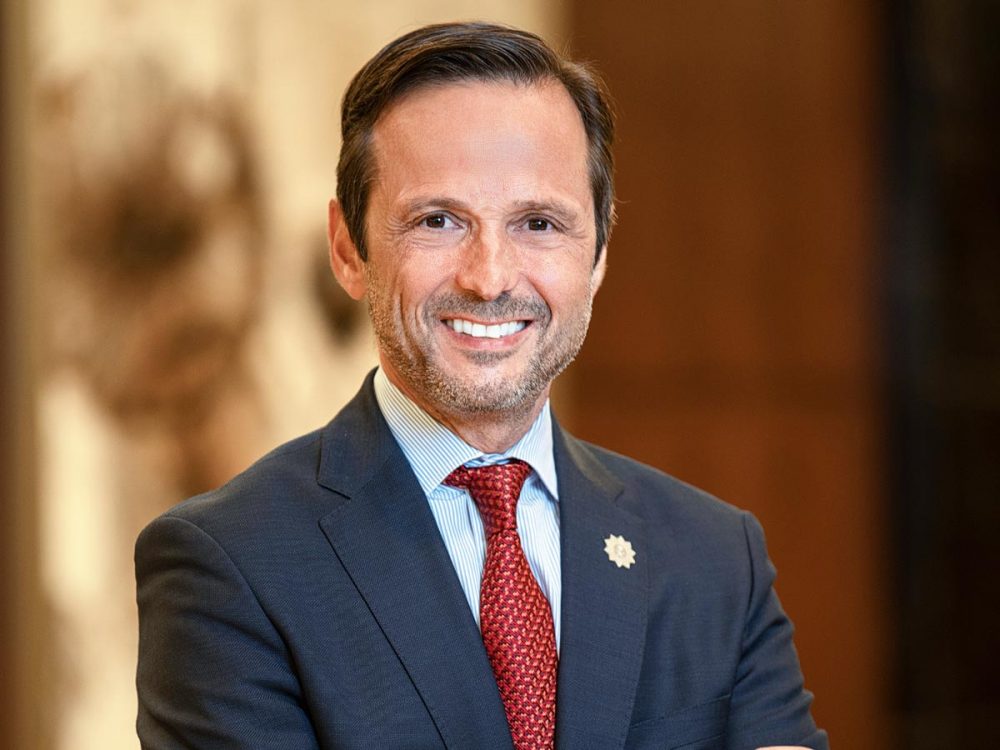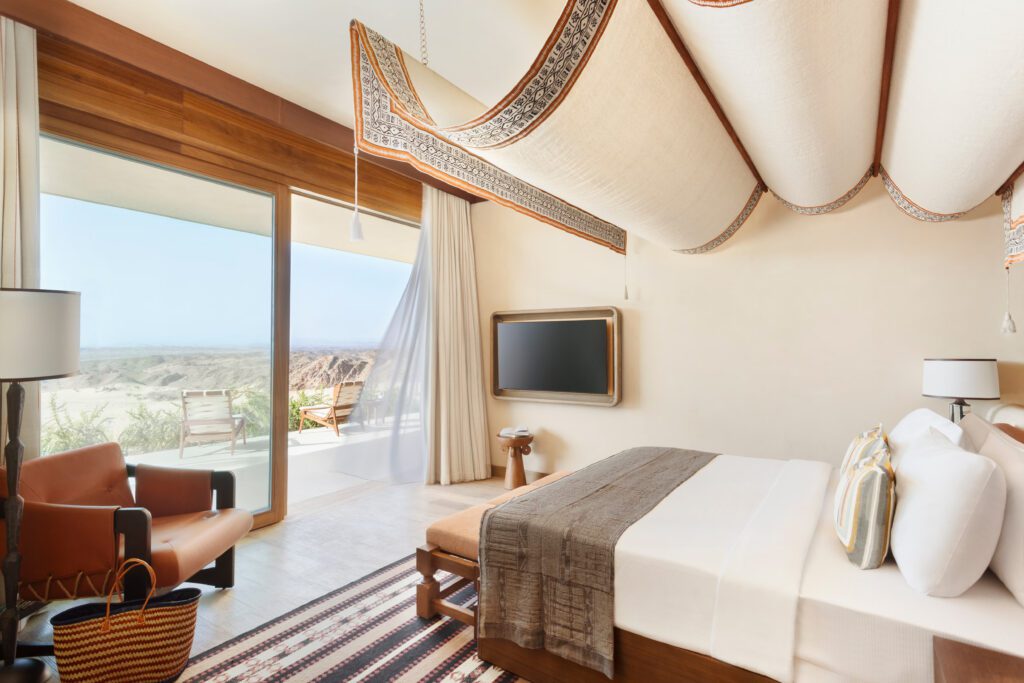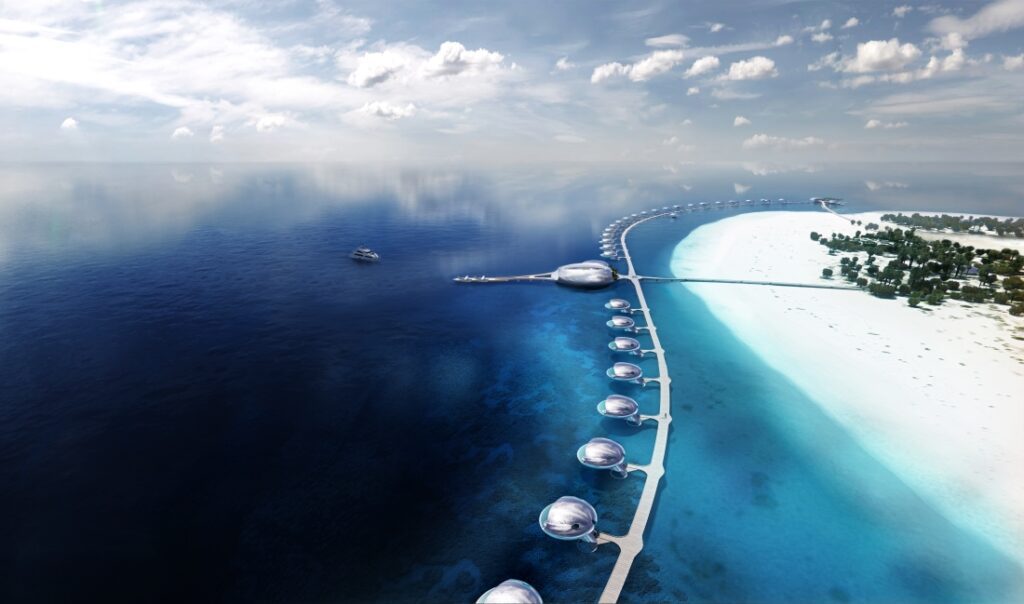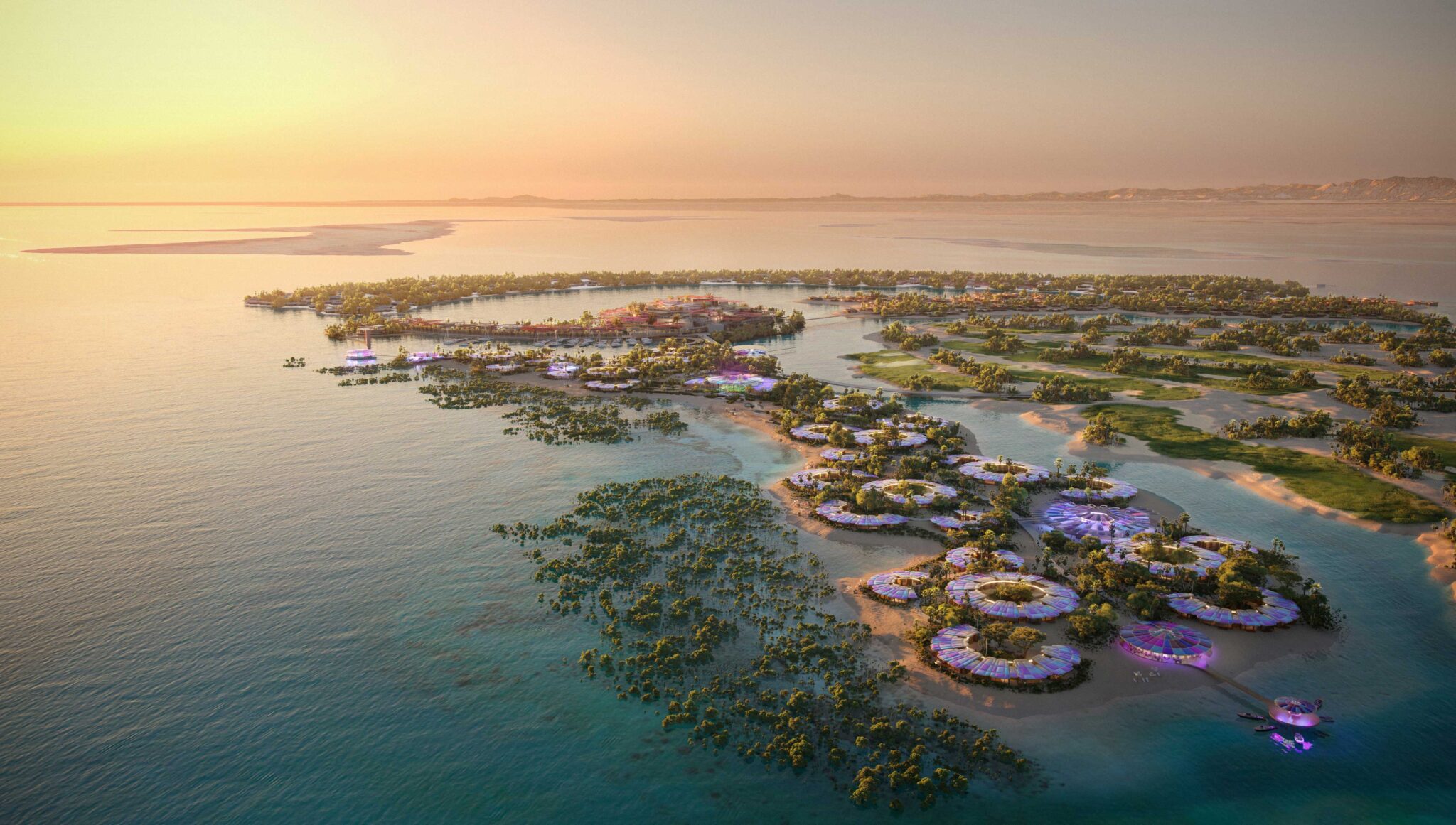Skift Take
Saudi Arabia's "Maldives of the Middle East", The Red Sea, will cost you at least $500 a night to experience. To remedy this, the developers are planning a whole new development to place their mid-market hotels.
The master developer of Saudi Arabia’s super-luxury island tourism project, The Red Sea, is working on another giga-project that will house more affordable hotel options and tap into a market — millions of travelers strong. Red Sea Global (RSG) group CEO John Pagano confirmed the development to Skift, adding that it will open before 2030 and introduce thousands more hotel rooms to the kingdom’s burgeoning tourism sector.
“Mid-market has a huge market potential and there are some locations that are better suited to that, closer to larger urban areas,” Pagano said. “When we move to more mid-scale, we’ll start getting into the three-star (hotel) offerings, different products, different positioning, and different target audiences. It’s about being strategic across the entire Red Sea coast.”
“As you get into the more mid-scale offerings, the hotel sizes get bigger because you need that scale to make them financially viable. Our sites are very large, many thousands of keys.”

The project will be south of The Red Sea, putting it closer to Saudi’s second major city, Jeddah.
In October 2022, The Red Sea Development Company rebranded as Red Sea Global, announced at that time it would be developing around a dozen more sites along the Red Sea coast. This mid-market hotel hotspot is one of them.
“We are basically developing everything south of Neom,” said Pagano.
Tapping Into Religious Tourism
Located nearer to Jeddah, the new project could seek to draw in the city’s many religious travelers. Jeddah is located approximately an hour from Makkah, one of the most important locations in all of Islam. Last year, Makkah received close to 7 million travelers, while Jeddah got 6 million.
For many religious tourists, their travels start and end with visiting the holy city. But Pagano sees an opportunity for his mid-market project to extend the stays of these pilgrims.
He said: “Think about the size of that market, one and a half billion Muslims in the world.”
“So if we can tap into that market and have them make it a once-in-a-lifetime trip where they do the religious piece, which is hugely important and then tack on a family vacation at something that’s reasonably affordable, I think it’s a very deep market for us. (Religious travelers) tend to spend more middle and lower end of the (travel) market.”
Pagano declined to tell Skift the name of this new project.
We don’t know the sorts of brand flags being planted on this new giga-project yet. Regional operator Rove has told Skift previously it could land in giga-projects, while Premier Inn Middle East has said the same. Almost all the global operators have mid-scale brands, think Courtyard by Marriott, Hampton by Hilton or Hyatt Centric.
The Red Sea Isn’t All Five-Star
The Red Sea is RSG’s flagship development and a postcard project for the crown prince’s tourism ambitions. It is all about luxury, with 22 islands being built on to create a “Maldives of the Middle East.” When completed by 2030, it will have 50 hotels, 8,000 rooms and 1,000 residences. Costing tens of billions to build, only five-star flags have been announced for the site so far, including Jumeirah, Rosewood, Grand Hyatt, Four Seasons, Ritz-Carlton Reserve, and even celebrity-favored party brand Faena.
16 hotels are planned to open by 2025, the remaining 34 will open before 2030.
The first hotel is already open, the Six Senses, located inland in the desert, where rooms start at around $1,800 a night. That’s similar pricing to the two Six Senses resorts in the Maldives during quieter travel months. The St. Regis is expected to open before the end of this year.

Pagano was keen to “dispel any misconception” that The Red Sea is purely a luxury retreat, stating that some hotels will “effectively be four-star.”
He said: “The entry-level into (The) Red Sea isn’t all five star. Our entry-level is effectively four-star.”
According to the CEO, these “four-stars” could include the Grand Hyatt hotel and Accor’s Fairmont as well as InterContinental along with Six Senses — both in the IHG stable.
Pagano said: “These are four-star products compared to Four Seasons and Rosewood and the others. We have a broader spectrum of products. Hotels can be part of the upper part of the chain scale, but it isn’t all five-star plus.”
Hotels such as the Grand Hyatt and InterContinental could command around $500 a night, while top-of-the-tree hotels will go into the thousands, Pagano explained.
Well-known, Western luxury brands such as these serve to make The Red Sea an international tourism destination. Particularly, RSG is eyeing India, Western Europe and the wider Middle East. Markets such as US and Canada are “more of a trek” and perhaps have greater perception issues to overcome when traveling to the Middle East.
Pagano said: “I’m super fixated on testing, improving, and making sure things work, as long as we deliver on the promise, then social media will take care of the rest. Because word of mouth is our strongest way to communicate, you know, what Saudi Arabia really is. Most people who come (to Saudi) don’t leave with a bad impression. It’s convincing people to come in the first instance.”
“That’ll get easier as we start to operate and open more of our destinations,” he added.
Here is every hotel confirmed at The Red Sea so far:
- Desert Rock Resort — 60 keys (self-operated by RSG)
- Faena The Red Sea — 150 keys (operated by Faena/Accor)
- Fairmont Red Sea — 200 keys (operated by Accor)
- Four Seasons Resort The Red Sea — 149 keys (operated by Four Seasons)
- Grand Hyatt The Red Sea — 430 keys (operated by Hyatt)
- InterContinental The Red Sea — 210 keys (operated by IHG)
- Jumeirah The Red Sea — 159 keys (operated by Jumeirah)
- Miraval The Red Sea — 180 keys (operated by Hyatt)
- Nujuma, A Ritz-Carlton Reserve — 63 keys (operated by Marriott)
- Raffles The Red Sea — 200 keys (operated by Accor)
- Rosewood The Red Sea — 200 keys (operated by Rosewood)
- Shebara Sheybarah Island — 73 keys (self-operated by RSG)
- SLS The Red Sea — 153 keys (operated by Ennismore/Accor)
- Six Senses Southern Dunes — 76 keys (operated by IHG)
- The Red Sea Edition – 240 keys (operated by Marriott)
- St. Regis The Red Sea — 90 keys (operated by Marriott)
Ultra-luxury Pockets
Red Sea Global is a company within the country’s Public Investment Fund, a sovereign wealth fund chaired by the crown prince that has more than $700 billion in assets — making it one of the biggest such funds in the world.
“We have the capital,” Pagano stated simply. Adding that: “Red Sea Global is probably the biggest hospitality and tourism real estate developer in the world.”
RSG is also planning to launch additional super-luxury projects all along Saudi, with later expansion likely in the wider Middle East and overseas.

The CEO revealed: “We just have to find the right types of projects wherever they might be that fits the overall vision and values of the business. So a dozen projects in Saudi (and it) wouldn’t be a surprise if you had a few in Dubai, Abu Dhabi, or some places.”
“We’re already looking at Europe,” he added, but stressed that right now, Saudi Arabia is the principal focus.
In addition to The Red Sea and nearby sister project Amaala, RSG is developing ultra-luxury sites such as Thuwal Private Island, which has only five rooms. Pagano said additional ultra-luxury island projects are a possibility.
Have a confidential tip for Skift? Get in touch
Tags: asia monthly, hospitality news, hotel news, The Red Sea
Photo credit: A render of The Red Sea. Used for illustrative purposes only. Red Sea Global
